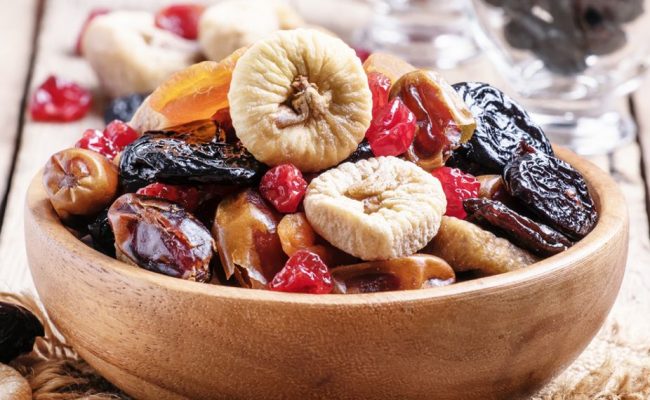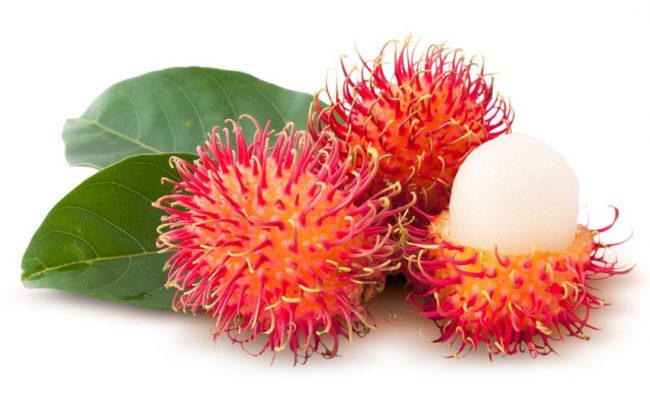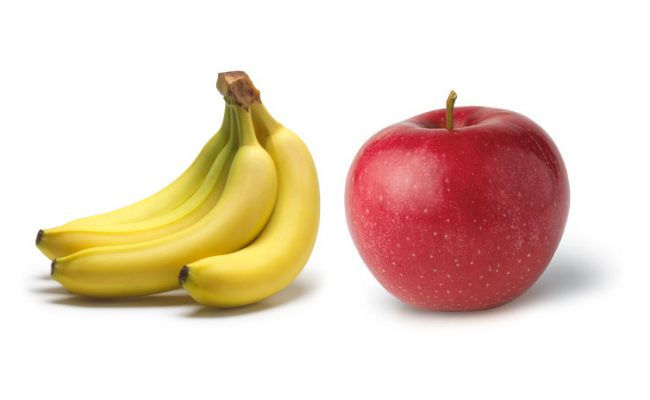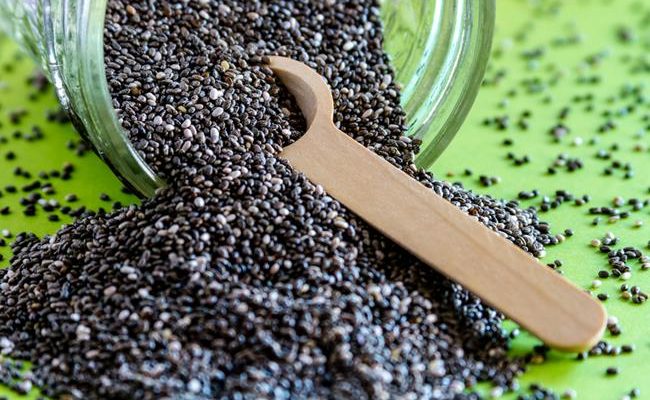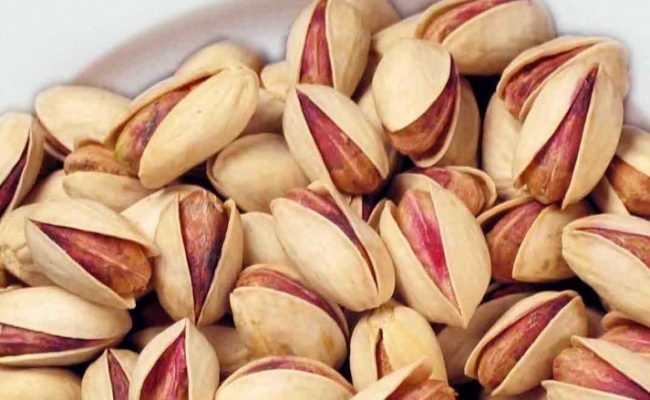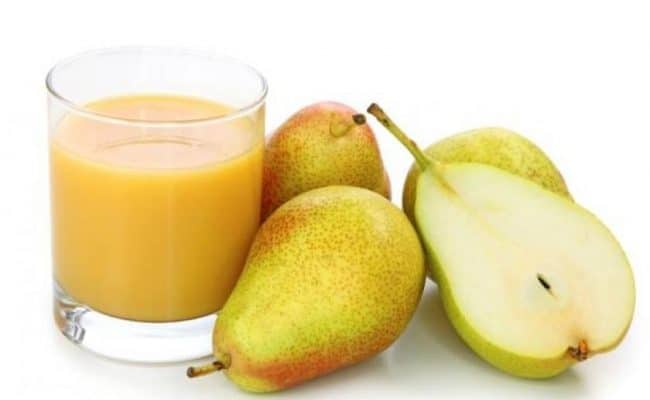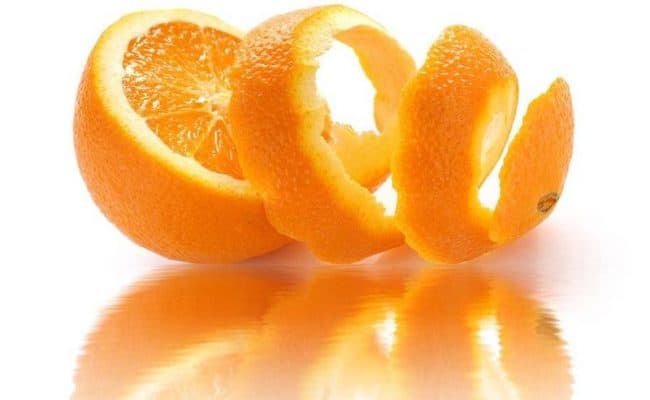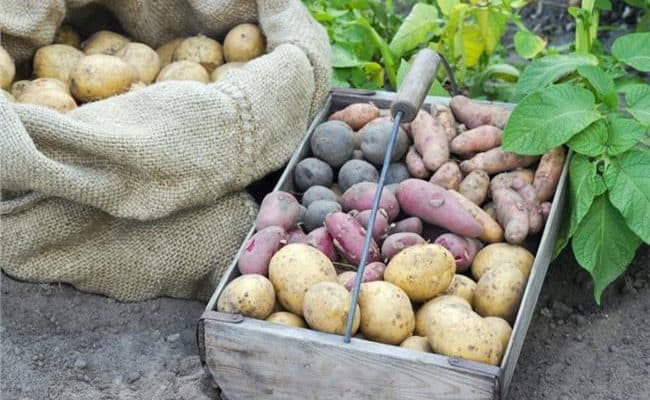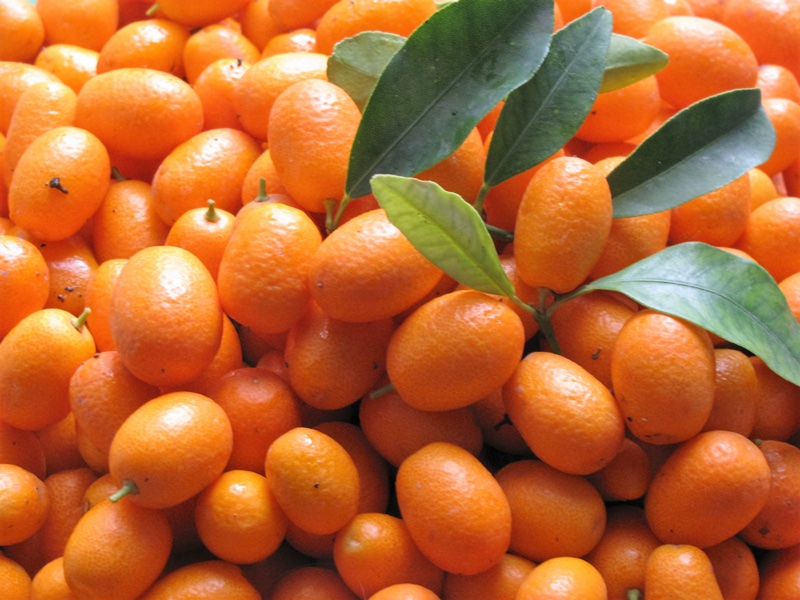
Incorporating kunquats into your diet can provide many health benefits. Kumquats are high in fiber because you can eat the outside thin rind layer. Besides being a good source of fiber, kumquats also provide many antioxidants, vitamins and minerals.
Kumquats are considered a small member of the citrus family. The taste is similar to an orange, but they are much smaller and oval shaped.
How you eat a kumquat can also differ from other citrus fruits. Normally you peel an orange, tangerine, grapefruit, etc. to eat the sweet interior of the fruit.
However, with kumquats you can eat the whole fruit in tact because the rind is very thin and there is virtually no white pith layer.
In fact, the rind is considered the sweetest part of the kumquat, and the flesh and juice are sour.
Kumquats are not a traditional staple fruit for most in the US unless you are close to kumquat trees in California or Florida.
Asian cultures also readily incorporate kumquats into their cuisine in various ways. Kumquats can be eaten plain, used in salads, made into marmelade, used in dressings, baked goods or various other ways.
Incorporating more kunquats into your diet can provide many health benefits. Kumquats are high in fiber because you can eat the outside thin rind layer.
Besides being a good source of fiber, kumquats also provide many antioxidants, vitamins and minerals.
Kumquat Nutrition
How many kumquats in a serving? Because kumquats are so small, you can eat a small handful for a serving. One small kumquat weighs on average about 20 grams. Therefore, a 100 gram serving can be about 5 kumquats.
A 100-gram serving of kumquats provides:
- 71 calories
- Less than 1 gram of fat
- 6 grams of carbohydrates (5% DV)
- 7 grams of fiber (28% DV)
- 9 grams of sugar
- 9 grams of protein (3% DV)
For less than 100 calories per 100 gram serving of kumquats, you also get a source of many of other nutrients. Therefore, kumquats are considered a nutrient dense food.
Kumquat Health Benefits
1. High in fiber and low in calories
Fiber is one nutrient that many Americans aren’t getting enough of. Current daily fiber recommendations are between 25-30 grams per day, but many Americans get an average of only 15 grams per day.
Getting enough fiber in the diet is associated with lowering risk for cardiovascular disease, diabetes, colon cancer and benefiting digestive health.
Eating a 100 gram serving of kumquats provides 7 grams of fiber which is 28% DV. Adding a handful of kumquats to your daily food intake can help bump up your fiber intake without adding many calories.
2. Kumquats are a good source of antioxidants
Besides being high in fiber, kumquats, like all fruits, are a good source of antioxidants.
A 100 gram serving of kumquats provides 73% DV vitamin C and 5% DV vitamin A (as beta carotene).
Besides these two antioxidant vitamins, kumquats provide other types of antioxidants called flavonoids.
A 2011 study (1) found kumquats contain 13 types of flavonoids.
Why is it important to eat foods, like kumquats, that provide flavonoids?
A 2014 review (2) on flavonoids and health concluded regular consumption of flavonoids from foods is associated with a reduced risk of: certain cancers, cardiovascular disease and neurodegenerative diseases.
Flavonoids not only act as antioxidants in the body that protect cells from damage, they also are able to influence key enzymatic pathways.
Flavonoids are in fruits, vegetables, nuts, seeds and spices. Therefore, eating a variety of these foods is key to providing a variety of flavonoids to your body as there are many types of flavonoids.
3. Kumquats are a surprising source for many minerals
While the amount of each mineral may not be as high as vitamin C content, adding kumquats to your diet can still bump up your intake of these minerals that many people may not get enough of in their diet.
A 100 gram serving of kumquats provides:
5% DV potassium. Potassium plays an important role in fluid balance and blood pressure levels. Many Americans do not get the recommended 4,700mg of potassium per day.
Adding more fruits, vegetables, dairy and legumes can increase potassium intake.
Low potassium intake combined with a high intake of sodium can increase risk for hypertension. Adding kumquats and other fruits and vegetables can help bump up your potassium intake.
If you are on a potassium restricted or have health issues with your kidneys, speak with your doctor before increasing your intake of potassium foods.
6% DV calcium. While there are other foods that provide more calcium, adding kumquats to your diet can provide an additional supply of this bone building mineral.
Dairy foods are often thought of primary calcium sources, but kumquats and leafy greens can be vegan sources of calcium.
5% DV magnesium. Magnesium is needed for over 300 processes in the body that include protein synthesis, muscle function, nerve function and blood pressure regulation (3).
Like potassium, most Americans do not meet the daily recommended intake of magnesium. Therefore, adding more foods that provide magnesium can help you meet the RDA intake. Other foods that provide magnesium include: nuts, leafy greens, whole grains and legumes.
Ways to eat kumquats
Besides eating kumquats whole, you can get more kumquats into your diet in many ways. Before you try a kumquat for the first time, keep in mind the outside layer is the sweetest part unlike other citrus fruits, and the inside juice can be sour.
Kumquats can also be sliced thinly as a salad, yogurt or oatmeal topping. If you want to experiment more with kumquats, try the following recipes:
Note in some areas you can get mandarinquat which is a cross between a mandarin and kumquat or a limequat which is a cross between a lime and kumquat.
Oval or nagami kumquats are the most popular which are the orange, oval shape. Round kumquats are round in shape and are golden color and are considered sweeter than the oval variety.
